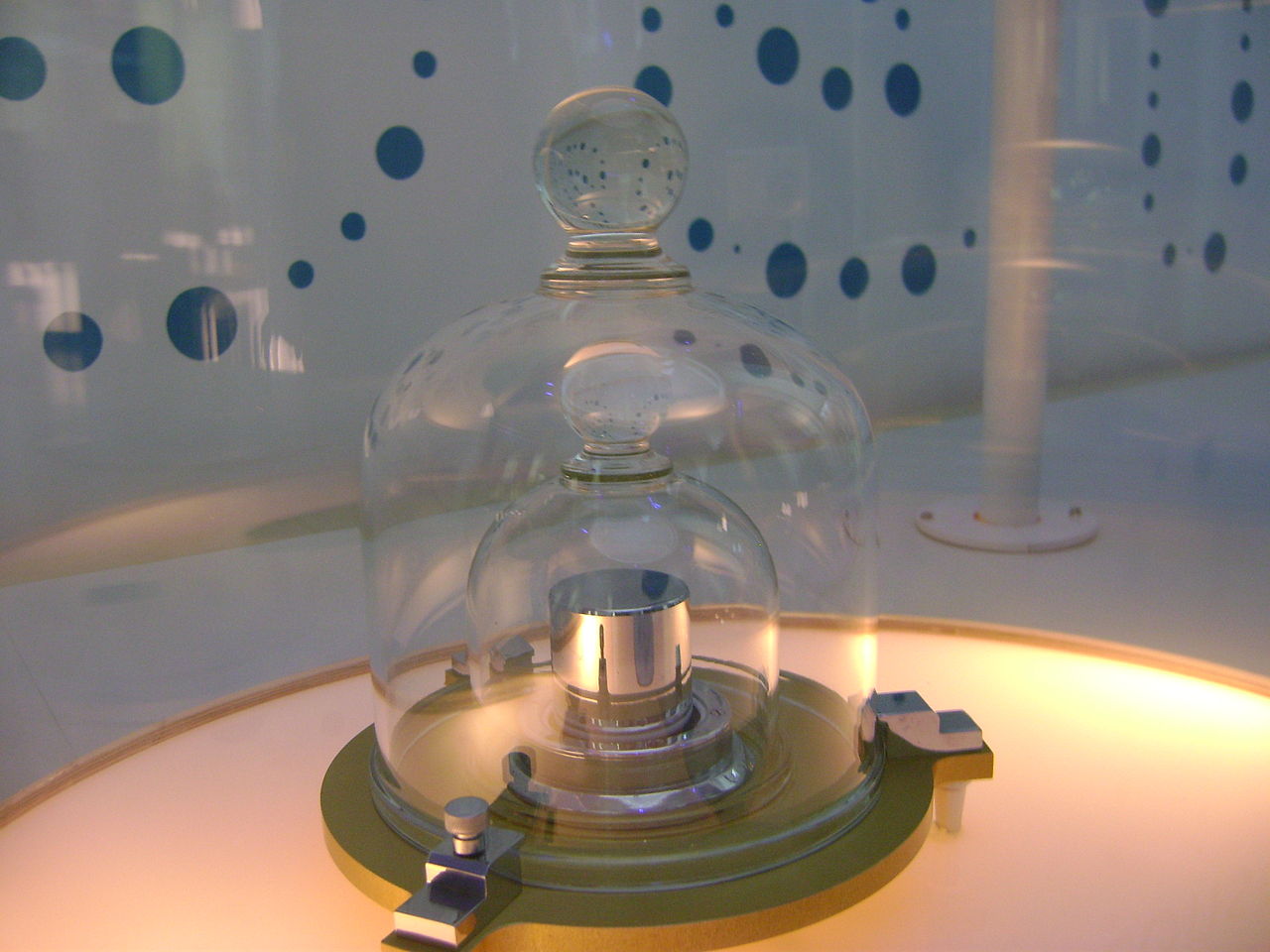For both Newton and Einstein
(not to mention any experiments involving mass),
a reliable and precise definition for a unit of
mass was essential. Since 1795, this has been
the kilogram. Originally, the gram was defined
as the mass of a cubic centimeter of water at
0°C in 1795
[6]. A kilogram was thus a
thousand times that mass. Soon after, a platinum
cylinder (called the "Kilogramme des Archives")
was contructed to be the new definition of the
kilogram in 1799
[7]. This definition
was kept until 1889, when a platinum-iridium
cylinder called the "International Prototype of
the Kilogram" (IPK for short) was accepted as
the new definition
[8].
The IPK definition stood for 130 years and was
only replaced in 2019
[9]. Long before
that, in 2005, the International Committee for
Weights and Measures recommended that the
kilogram be redefined in terms of fundamental
constants
[10]. The issue was that the
IPK did not have a constant mass relative to its
copies. Despite careful handling procedures and
storage conditions, the mass of the IPK had
drifted. A new, constant definition of the
kilogram was needed.

Replica of the IPK in the Cité des Sciences et
de l’Industrie in Paris. Image taken from
Wikipedia Commons from user Japs 88.
Link
 [1]
[1] [2]
[2] [3]
[3] [1]
[1] [2]
[2] [3]
[3]